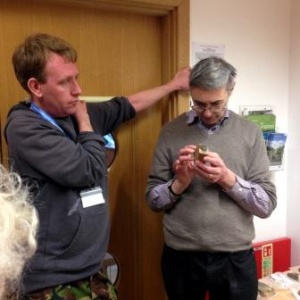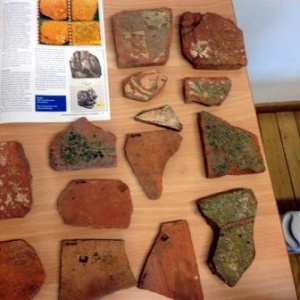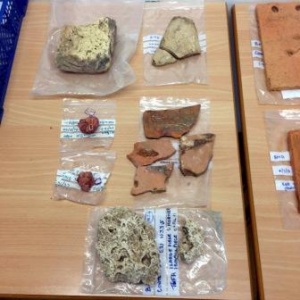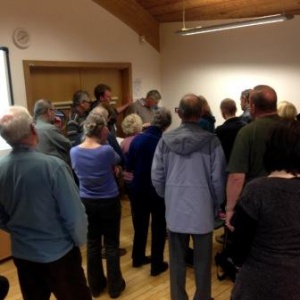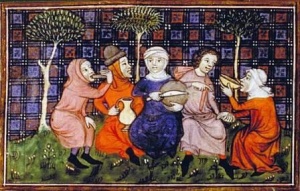Ceramic Building Material Workshop with Ian Betts
Today the Ceramic Building Materials workshop was held at Shorne Woods Country Park. It was led by Ian Betts from the Museum of London Archaeology.
The event was well attended, with individuals from SWAG itself, the Kent Archaeological Society, the Historical Research Group of Sittingbourne, Cliffe and Hoo Historical Society, the West Kent Archaeological Society and the Maidstone Area Archaeological Group.
Ian gave a run down on the history of CBM focusing on London and the South-East. He covered both the Medieval and Post-Medieval period looking mainly at roof tile, floor tile, wall tile and brick.
Many of the attending groups bought in samples from their digs and Ian took a look at all the pieces, giving comment as he went along. Sites covered included Randall Manor, Bredhurst, Scotgrove and All Saints, Hartley.
Thank-you Ian.

